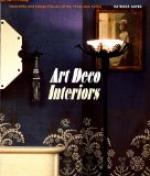CHAPTER XIII
PERIOD ROOMS
We use the term “period rooms” with full knowledge of the difficulties involved, in defining Louis XIV, Louis XV, Louis XVI, Directoire, Jacobean, Empire, Georgian, Victorian and Colonial decorations. Each period certainly has its distinctive earmarks in line and typical decoration, but you must realise that a period gradually evolves, at first exhibiting characteristics of its ancestors, then as it matures, showing a definite new type, and, later, when the elation of success has worn off, yielding to various foreign influences. By way of example, note the Chinese decoration on some of the painted furniture of the Louis XVI type, the Dutch influence on Chippendale in line, and the Egyptian on Empire.
One fascinating way of becoming familiar with history, is to delve into the origin and development of periods in furniture. The story of Napoleon is recorded in the unpretentious Directoire, the ornate Empire of Fontainebleau, while the conversion of round columns into obelisk-like pilasters surmounted by heads, the bronze and gilded-wood ornaments in the form of the Sphynx, are frank souvenirs of Egypt.
Every period, whether ascribed to England, France, Italy or Holland, has found expression in all adjacent countries. An Italian Louis XVI chair, mirror or applique is frequently sold in Paris or London as French and Empire furniture was “made in Germany.” Periods have no restricted nationality; but nationality often declares itself in periods. That is to say, lines may be copied; but workmanship is another thing. Apropos of this take the French Empire furniture, massive as much of it is, built squarely and solidly to the floor, but showing most extraordinary grace on account of the amazing delicacy of intricate designs, done by the greatest French sculptors of the time and worked out in metal by the trained hands of men who had a special genius for this art. At no other time, nor in any other country, has an equal degree of perfection in the fine chiselling of metals so much as approached the standard attained during the Louis[1] and the Empire periods. If in your wandering, you happen upon a genuine bit of this work in silver or ormoulu, buy it. The writer once found in a New Jersey antique shop, a rare Empire bronze vase, urn-shaped, a specimen of the very finest kind of this metal engraving. The price asked for it (in ignorance, of course) was $2.50! The piece would have brought $40 in Paris. But the quest of the antique is another story.
When one realises the eternal borrowing of one country from another, the ever-recurring renaissance of past periods and the legitimate and illegitimate mixing of styles, it is no wonder that the amateur feels nervously uncertain, or frankly ignorant. Many a professional decorator hesitates to give a final judgment.




